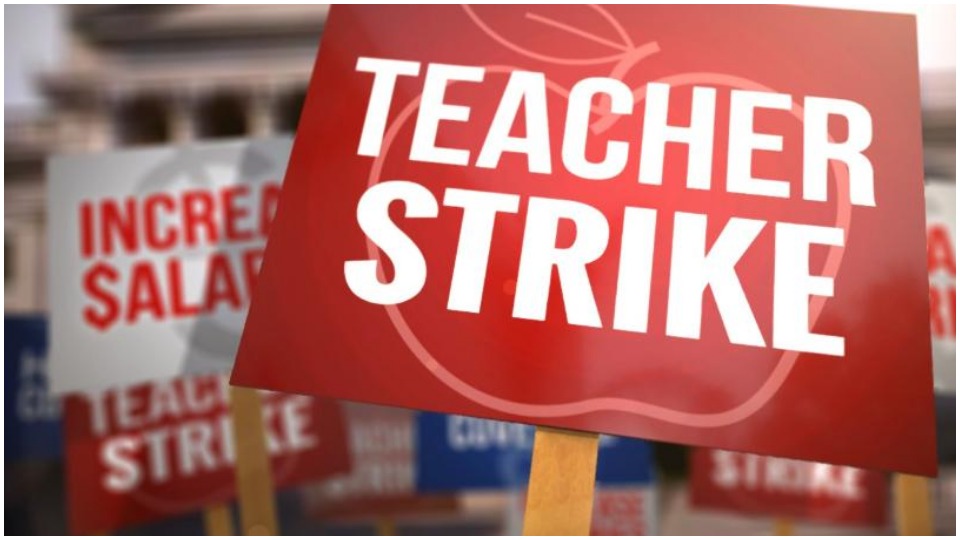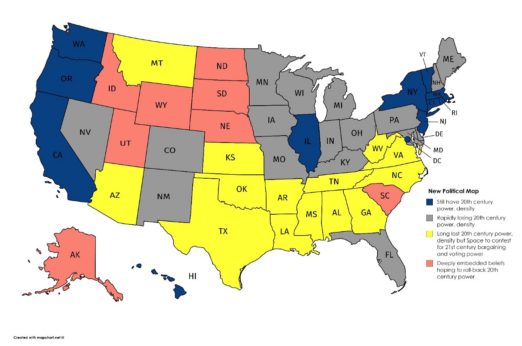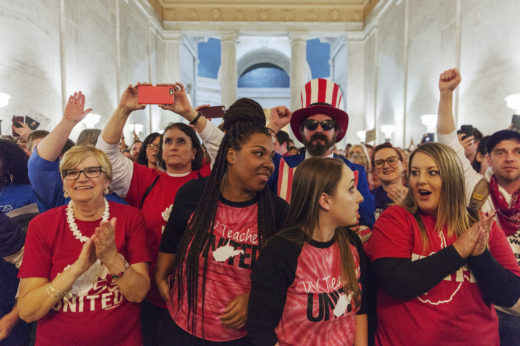
In the last six weeks, educators and school employees in politically red states have taken direct action to improve conditions for themselves and their students. Like the Memphis sanitation workers 50 years ago, these individuals took risks despite a lack of legal protections. And like these southern public sector employees before them, the bravery of West Virginia teachers was rewarded — in this case with a pay increase for all state workers. Their militancy models what it looks like for working people to act like a union — regardless of what legal protections they may lack or how employers define them.
These actions earned the attention of many progressives and labor leaders. Teachers in West Virginia, Oklahoma, Kentucky, and Arizona have inspired many and reminded movement leaders of the power and resilience of working people at all levels, despite the limitations of the laws and institutions that are meant to protect and defend them.
For the overwhelming majority of the past century, a union contract has been the best weapon to ensure that working people in the United States have access to staples of a social safety net, such as health care, retirement income, and other benefits often provided in other democracies directly by the government. But these 20th-century protections have been eroded and even perverted into limitations to the democratic activities of the working majority.
Corporations have re-organized themselves to more efficiently exploit the human labor and natural resources of the Earth in devastating ways. National industries have given way to multinational production chains, just-in-time manufacturing, and compulsive labor migration patterns that maintain companies’ flexibility needs.
Upsurge in the most unlikely of places
And yet, many non-union workers and union members in right-to-work states are building a vibrant movement that is shaping the future of bargaining in ways that could engage the 90 percent or more of working families without access to a union contract. Like their forebears, working people today are not waiting until the perfect legal framework is in place before creating a new democratic platform for having a say, as equals, over their working conditions.
After all, even in the heyday of the National Labor Relations Act, an overwhelming majority of workers won the ability to form unions through militant action, not the then-new elections process. And today, the harder some employers have worked to restrict workers’ ability to collectively bargain, the nimbler and more creative the modern labor movement is actually becoming. They are building a 21st-century labor movement.
Birthing the new framework for collective bargaining will not happen simply by rallying only those who already have access to 20th-century rules and protections. Certainly, unions and other institutions must protect what they’ve won. But for the remaining 90 percent-plus of working people, most of the traditional channels are completely blocked. So building organizing and collective bargaining power requires the kind of creativity and militancy that could ultimately set up the foundation for establishing a bargaining framework that goes beyond what was won in the New Deal — expanding the ways in which working people collectively negotiate together, the types of binding agreements they can win, what they can bargain over, and who they can bargain with. And teachers now join food service employees, retail workers, and many others in leading the way.
However, in addition to their excitement, some are viewing this development with surprise — not expecting working people in places with some of the harshest labor laws to be in motion. But through the lens of the right map, this should be no surprise. Re-defining our relationship to various geographies of the country needs to go beyond the electoral map, but rather towards how our movements can build power — both at the ballot box and directly with capital through expanded forms of collective bargaining. Working people want more than “good elected officials.” They seek the ability to govern in ways that maximize everyone’s democratic participation and practice — at work and in their communities.
Mapping the path to power
So, a different map is necessary to understand the recent upsurge in “red state” activity, a map that defines states not by the political leanings of their congressional delegations but by their relationship to 20th-century democracy and its prescribed protections.
The current moment calls on us to popularize a new map that provides guidance on how to deal with working people in the entire country — addressing the much larger goal of building the power to organize, bargain collectively, and ultimately govern in all aspects of our economic and political lives — far beyond the mechanisms of the current electoral channels and traditional collective bargaining agreements.

First, there are the states that still have robust infrastructure and protections for working people’s right to vote and collectively bargain based on 20th-century laws and regulations — noted in blue in the illustration. (To see map in larger resolution, click here.)
These areas, such as New York, Massachusetts, and California, still maintain robust union density, have contentious primaries from the left, and have a rich tradition of groups representing a popular majoritarian ideology which influences public opinion about the role of government, corporations, development, and workplace democracy.
Progressives in these areas continue to exercise our existing power through the current channels and institutions. They can still win in ways that model how we make our values real in the world and expand what people believe is possible.
The states noted in grey — many in the Midwest — represent areas that have experienced a recent and rapid erosion of protections for the voting and bargaining rights they enjoyed in the 20th century. Individuals in these areas still have an institutional memory of the power they used to have before the plant closed and/or the law changed. Aside from being incredibly angry, these communities are skeptical not only of the old institutions that “betrayed them” but may also hesitate to embrace any untested strategies for building power. In some of these states, working people can still win based on the 20th-century rules — though less and less often.
The focus of movement leaders in these areas is to validate the frustration that the old system did not work while also moving campaigns and strategies that can yield small victories to rebuild momentum and morale while also building organization, especially as communities in these regions recognize and still relate to various cultures of organizing.
The pink states indicate states that have both long lost (if they ever really had) most 20th-century protections for the ability to vote and/or negotiate with capital and that have little movement organization to confront the deeply embedded right wing. The first instinct might be to give up on people in these areas. Often, the population of these states is quite small in comparison to the others. And the requirements for winning/losing an election are less complex.
In these states, progressives should consider how they are building a base among people who share our values — creating visibility for opposition forces in some of the most difficult political terrain with the goal of discrediting the radical right while developing them to the point of being able to move their own strategic campaigns.
Last, many of the states in yellow have been written off by national progressive actors since the U.S. Civil War. These states have long lost (if they ever really had) most 20th-century protections for the ability to vote and/or negotiate with capital. In some instances, this has been explicit (such as right-to-work-for-less laws) or implicit (such as disenfranchisement post incarceration in states with large Black populations of voting age). Most yellow states have little to lose in a struggle for power. And in those areas where working people have come together to struggle against the existing power structure, they often demand far more than a return to the old system of organizing, bargaining, or even voting.

Nothing to lose, everything to gain
It is in these states that some of the most exciting and militant upsurges are happening, among teachers, students, and many others. With the looming threat of Friedrichs vs California Teachers Association and now of Janus vs AFSCME Council 31, several public sector unions have reported significant growth of volunteer membership in yellow states. They have nothing to lose, and everything to gain. The reward for the risk West Virginia teachers took was a five percent wage increase for all state employees. Teachers negotiated far beyond their immediate needs.
The same is true in the political arena. In yellow states like North Carolina, for example, it will not be enough to ensure that individuals are able to vote. The entire organization of voting in the state, including how districts are drawn and how decisions get made, should be contested by movement actors there. The North Carolina labor movement is not simply demanding the state repeal of right-to-work-for-less laws, but is insisting that they and the people they represent who live, worship and play in the state be able to have a collective, democratic voice in the how the state runs.
Progressives’ role in yellow states must be to support and re-enforce local struggles where working people are both exposing the failings of the existing regimes and structures while also re-defining the social contract in ways that establish new 21st-century rules for governing, voting, organizing, and bargaining — essentially, the foundations of democracy. Coordinated victories in these states could change the national paradigm in favor of working class organizations.
Through the lens of this map, the recent upsurge of teachers, students, and many others outside of the more traditionally “progressive” states is not surprising at all. In a way, these areas are frontline sites for building new on-ramps to 21st-century power — establishing from scratch new systems for democratic participation in society and in the workplace. No working class community is left behind in defining the future of organizing and collective bargaining.










